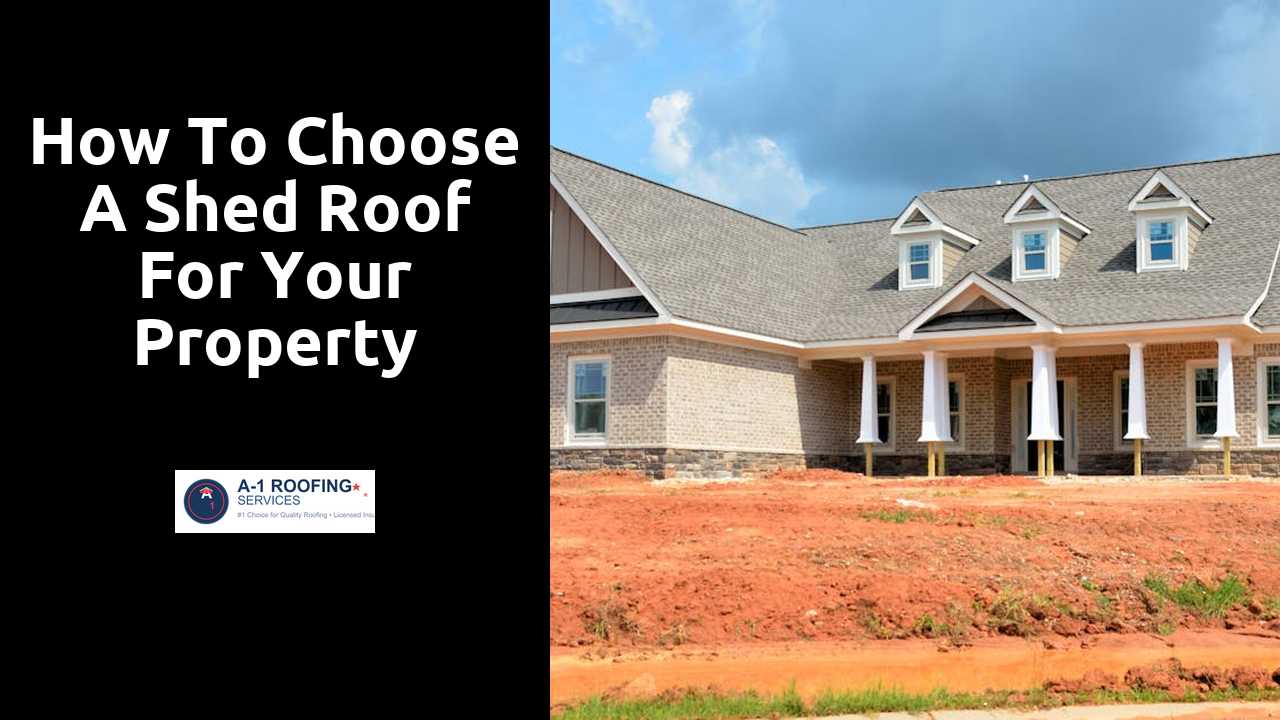
How to Choose a Shed Roof for Your Property
Table Of Contents
Installation Considerations for Shed Roofs
When planning the installation of a shed roof, several factors come into play. First, the roof pitch should be suitable for the local climate. A steeper pitch can help with drainage in rainy areas, while a flatter roof may be more appropriate in regions with low snowfall. Additionally, the orientation of the roof can affect sunlight exposure and heat retention, influencing the overall comfort and usability of the shed.
Material choice is another key consideration. Options like asphalt shingles, metal, or wood each have unique benefits and challenges. Asphalt shingles are affordable and easy to install but may require more maintenance over time. Metal roofs offer durability and reflectivity but can be more expensive upfront. Weighing these elements can help ensure that the selected roof aligns with both budget and long-term usage plans.
Here is a super informative post that goes into more detail.
DIY vs. Professional Installation
Deciding between a DIY approach and hiring a professional for shed roof installation involves evaluating your skill level and experience with similar projects. For those who are handy and comfortable using tools, constructing a shed roof can be a satisfying challenge. Detailed plans and instructional resources are widely available, making it possible for enthusiastic DIYers to tackle the task with confidence. However, beginners may face difficulties that could delay progress or compromise the integrity of the roof.
On the other hand, professional installation offers expertise that can ensure a high-quality finish. Professionals bring years of experience and knowledge about building codes, materials, and techniques that may be unfamiliar to a novice. This can save time and reduce the risk of costly mistakes. While the upfront cost may be higher, the peace of mind and durability of a professionally installed roof often make it a worthwhile investment for homeowners looking for long-lasting solutions.
Maintenance Requirements for Shed Roofs
Regular maintenance is essential to prolong the lifespan of a shed roof. Performing routine inspections allows you to identify potential issues before they escalate. Check for signs of wear, including missing shingles, cracks, or sagging areas. Clean gutters and downspouts to prevent water buildup, which can lead to leaks and damage. Additionally, clear debris off the roof surface, as accumulated leaves and branches can trap moisture and promote rot or mold growth.
In addition to inspections, seasonal maintenance tasks should be scheduled. After heavy rain or snowfall, inspect the roof for any signs of damage. If your shed roof is made of wood, applying a protective sealant every few years will help guard against moisture and UV rays. For metal roofs, ensure that rust is addressed promptly to prevent corrosion. Keeping the area around the shed clear of overhanging branches will further reduce the risk of damage from fallen limbs.
Long-term Care Tips and Tricks
Regular inspections can extend the life of your shed roof significantly. Check for any signs of damage such as cracks, leaks, or missing shingles. Addressing issues promptly can prevent minor problems from escalating into major repairs. Additionally, cleaning the roof periodically helps remove debris that can trap moisture and lead to mold or rot.
Applying a protective coating can also enhance durability. Many coatings are designed to reflect UV rays, reducing heat absorption and prolonging the life of the roof materials. Seasonal maintenance tasks such as checking gutters and downspouts contribute to proper water drainage, safeguarding the foundation of your shed. Being proactive in these areas can save time and money in the long run.
Enhancing Energy Efficiency with Shed Roofs
Shed roofs can significantly contribute to energy efficiency when designed and constructed thoughtfully. Choosing materials that reflect sunlight can help reduce heat absorption, ultimately leading to lower cooling costs during warmer months. Additionally, incorporating proper insulation prevents heat loss in colder climates, keeping your shed comfortable throughout the year.
Proper ventilation plays a crucial role in enhancing energy efficiency as well. Installing vents allows for better airflow, which can help regulate temperature and manage moisture levels inside the shed. This combination of insulation and ventilation creates a more energy-efficient environment, benefitting both the shed’s contents and overall energy consumption.
Insulation and Ventilation Options
Proper insulation is crucial for enhancing energy efficiency in a shed. Insulation options include traditional fiberglass batts, foam boards, or spray foam, each offering varying degrees of thermal resistance. When selecting insulation, consider the climate of your area and the intended use of the shed. Proper installation ensures effectiveness, minimizing air leaks and maintaining a comfortable temperature throughout the year.
Ventilation is equally important for controlling moisture levels and preventing mold growth. Ridge vents, gable vents, and soffit vents can be integrated to create a balanced airflow. Adding windows can also augment natural ventilation while providing additional natural light. Assessing your shed's layout and climate will help identify the most suitable ventilation solutions to promote air circulation and protect stored items.
Related Links
Why Choose a Butterfly Roof for Your Next BuildKey Features of Gambrel Roofs for Practical Homeowners